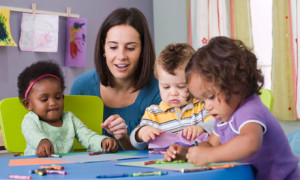
Tips for Communicating With Your Toddler
Before they’ve reached a certain age, having a conversation with your toddler can be a very one-
sided experience, but as soon as the little ones hit two or three, the avalanche of words begin. In
fact, children know about 20 to 200 words by the age of two and those numbers balloon to 1,000
only a year later. The expectations for your toddler keep growing with the anticipation your child
will have a strong vocabulary by the time they reach preschool.
Like almost everything else in your toddler’s life, your input is important to developing the skills
they’ll need to communicate effectively and the run-up to that all important third year can start
earlier than you might have imagined.
Gestures
Responding to your baby’s gestures and sounds is a great way to initiate the process. For
example, when your baby holds her arms out to be picked up, use some simple words to affirm
the gesture. Saying: “You want up, don’t you?” helps the baby to associate gestures they make
with words they can’t yet understand and interests the child in the relationship.
Of course, when they move into the toddler stage, reading to them is a great way to
build their curiosity in developing their own language skills, but there are some other interesting
methods that work wonders too. Here’s a few of the more effective ways to turn your toddler into
a nonstop chatterbox.
Peanut Butter and Tissues
Helping them understand how words form makes developing language more interesting. For
example, you can place a little dab of peanut butter behind her front teeth and tell her to touch the
spot with her tongue, carefully explaining afterward that’s the same spot her tongue will touch
when she pronounces words with the letters T and D. Other games you can play with your toddler
include demonstrating the way in which consonants work by placing a tissue in front of his face
and then asking him to make the P sound so the tissue flutters.
Giving your child a narration of your day is another great way to get them interested in the
relationship between language skills and the world around them. Describing how you’re washing
the dishes gets them to feel more connected to the activities of the older members of the family
and talking to them as you play keeps them interested in learning language skills on a constant
basis. Be simple and specific telling them how their arms and legs get wet when bath time comes
around and, if possible, have each member of the family share an important event from their day.
Finally, although it’s usually considered irritating when you do it in conversation with another
adult, repeating yourself when talking with your toddler is a good thing. New words have a better
chance of sticking in your child’s vocabulary when they get repeated in the same sequence. For
example saying: “See how big the tree is? That dog across the road is big too,” draws attention to
the one word you want to focus on.
For more interesting articles like this, visit All My Children Daycare.
Author: Rob Starr